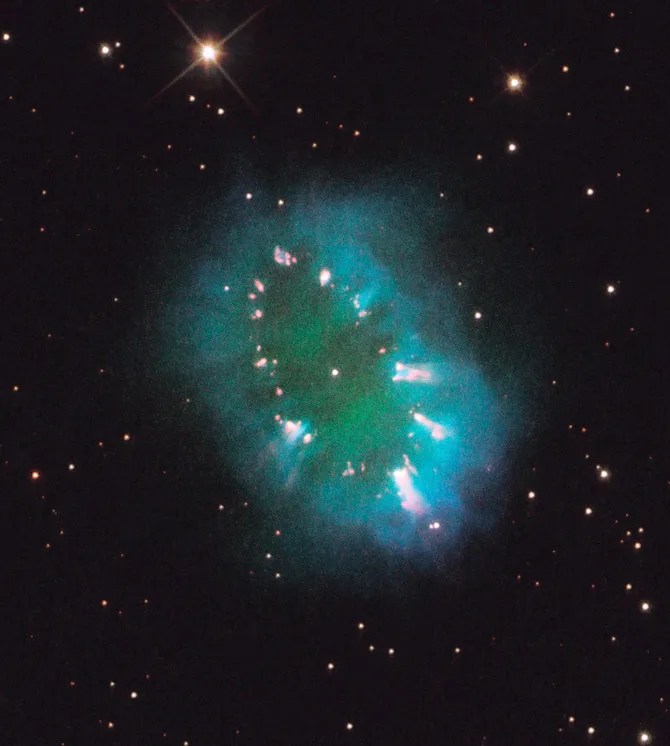
A giant cosmic necklace glows brightly in this NASA Hubble Space Telescope image.
The object, aptly named the Necklace Nebula, is a recently discovered planetary nebula, the glowing remains of an ordinary, Sun-like star. The nebula consists of a bright ring, measuring 12 trillion miles wide, dotted with dense, bright knots of gas that resemble diamonds in a necklace.
A pair of stars orbiting close together produced the nebula, also called PN G054.2-03.4. About 25,000* years ago one of the aging stars ballooned to the point where it engulfed its companion star. The smaller star continued orbiting inside its larger companion, increasing the giant’s rotation rate.
The bloated companion star spun so fast that a large part of its gaseous envelope expanded into space. Due to centrifugal force, most of the gas escaped along the star’s equator, producing a ring. The embedded bright knots are dense gas clumps in the ring.
The pair is so close, only a few million miles apart, they appear as one bright dot in the center. The stars are furiously whirling around each other, completing an orbit in a little more than a day.
The Necklace Nebula is located 15,000 light-years away in the constellation Sagitta. In this composite image, taken on July 2, Hubble’s Wide Field Camera 3 captured the glow of hydrogen (blue), oxygen (green), and nitrogen (red).
Hubble is a project of international cooperation between NASA and the European Space Agency. NASA's Goddard Space Flight Center in Greenbelt, Md., manages the telescope. The Space Telescope Science Institute (STScI) in Baltimore conducts Hubble science operations. STScI is operated for NASA by the Association of Universities for Research in Astronomy Inc. in Washington.
*Editor's Note: This figure was corrected from 10,000 to 25,000.
Donna Weaver / Ray Villard
Space Telescope Science Institute, Baltimore, Md.
dweaver@stsci.edu/villard@stsci.edu
410-338-4493 / 410-338-4514































